7 Foods I Eat Daily to Maintain Great Health
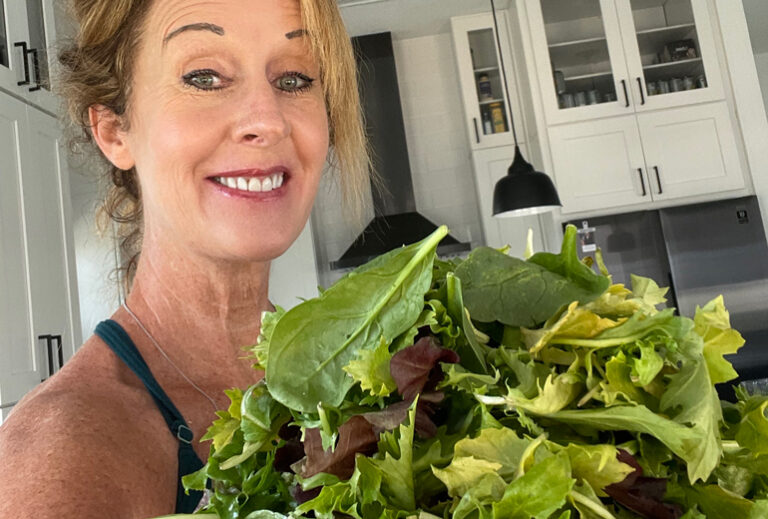
What we eat every day shapes our energy, mood, skin, and long-term health and vitality.
Over the years, I’ve researched numerous diets and trends, but I’ve learned that the simplest approach – focusing on real, whole foods – is what makes me feel my best.
(I’ve never felt better than since I got off supplements. You’ll know why, reading my new book, Take Daily: How Supplements Hijack Our Health.)
It’s food. It’s always been food. And being in the sunshine, and away from chaotic frequencies as much as possible. Plus, movement and having a happy social life or family.
But food. Let’s get back to food.
These are the foods I eat every single day (or almost every day) to maintain vibrant health, glowing skin, balanced energy, and a strong immune system.
None of this is complicated – it’s just consistency and a love for nourishing foods that make me feel alive.
Foods to Eat Daily for Good Health #1 — Leafy Greens
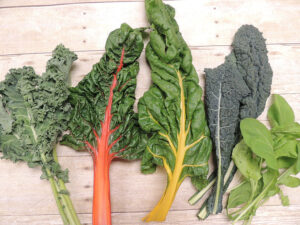
Leafy greens are among the most nutrient-dense foods available.
Leafy greens are the cornerstone of my diet — the single most important food I eat daily.
From spinach and kale to chard and collards, leafy greens are rich in vitamins, minerals, and phytonutrients that support everything from brain clarity to digestive health.
Why I include them:
- They’re among the most nutrient-dense foods available — packed with vitamins, minerals, fiber, and other beneficial compounds.
- They’re linked with improved energy, better skin, clearer thinking, and improved digestion.
- They also support long-term health: e.g., a cup of raw leafy greens daily was associated with improved heart and cognitive health in studies.
- Our most closely-related primate cousins knew innately to eat them – all day, every day. (Why would we eat an all-meat diet, when the primates eat none, and intuitively know to eat plants / greens?)
If you're concerned about oxalates in leafy greens, please read my article my article to discover the truth, because for almost everyone, the benefits of consuming raw or lightly cooked greens far outweigh the risks.
[Related: 23 Reasons to Eat More Leafy Greens]
How I eat them:
- I often blend them into a green smoothie in the morning or for lunch – about three large handfuls. Here are my top 11 leafy greens for adding to smoothies.
- For lunch or dinner, I’ll have a large salad of mixed greens (romaine, arugula, chard) topped with other veggies and healthy fats.
- On some days, I sauté spinach – my favorite way to consume cooked spinach – or kale as a side dish with garlic/olive oil.
- You can even consume raw, leafy greens by the handful – using this Dinosaur trick.
Tip: Because leafy greens can sometimes carry more pesticide residue (due to large surface area and growing practices), I always choose organic, because they are about the same price, and I thoroughly wash the leaves.
Foods to Eat Daily for Good Health #2 — Whole Fruits
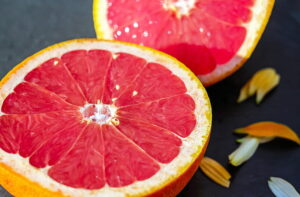
I particularly love grapefruit, and sometimes eat a few as a meal.
Whole fruits are a regular daily item in my diet – I aim for at least three servings. They’ve gotten a bad rap since the Carnivore Diet came out, but you know what’s funny –
– the guy who wrote the book by that name had some health problems and has been eating fruit, too, for a couple of years.
Why I include them:
- I enjoy sweetness and delicious foods. When sugar is in its whole form – in the form of whole fruit – it hasn’t been stripped of fiber, and it enters the bloodstream at a slower pace and doesn’t require so much insulin to process, so blood sugar rises a normal amount. Nobody ever became diabetic from eating fruit.
- Whole fruits are loaded with vitamins, minerals, and other nutrients, particularly vitamin C (for immunity), B vitamins (to support energy), phytonutrients, and enzymes, which are critical for digestion and assimilation, making sure that we get all the nutrients we’re supposed to from our diet.
- Many fruits, especially darker berries like blueberries and blackberries, are high in antioxidants.
If you’ve read my new book, Take Daily, you know that taking “vitamin C” (ascorbic acid, which is NOT vitamin C) or “B Complex” (made from petrochemicals and other nasties) does not in any way compensate for the ACTUAL nutrients found in fruit.
How I eat them:
- Green smoothies, of course! I always add whole fruits to my daily green smoothies, especially bananas, apples, and berries.
- Here’s a fruit dip recipe you can enjoy with whole fruit, which features raw honey.
- Fruit salad with chopped fruit and nuts on top, especially pecans, because they are naturally sweet.
- I particularly love grapefruit, and sometimes eat a few as a meal. Mangoes and watermelon are my other two favorite fruits. But I stop the watermelon at 2 pm, or I keep waking up during the night!
Foods to Eat Daily for Good Health #3 — Nuts / Seeds

Nuts and seeds are full of fiber, which I think is the #1 American diet deficit.
The nutritional benefits of nuts and seeds are extraordinary.
Why I include them:
- Seeds, like flax, chia, and pumpkin seeds, may be small, yet they are some of the most nutritious foods.
- Nuts are an excellent choice for youthful beauty. Dietary analysis shows that a higher intake of vitamin E (among other nutrients), found in nuts, correlated with improved skin elasticity.
- Snacking on nuts, like almonds, can sustain you for hours.
- Nuts, like almonds, walnuts, and pecans, give you energy, slow aging, are great for your heart and brain health, decrease inflammation, boost immunity, and they’re full of fiber, which I think is the #1 American diet deficit.
How I eat them:
- In green smoothies, like my crunchy Berry Nutty Smoothie or my Almond Smoothie.
- My salads are never boring. One great tip for adding texture and crunch is to include nuts and seeds, like our Sprouted Flax Seed and Sprouted Tri-Omega. Virtually all nuts and seeds contain the best kind of fats. Fats help you absorb the vitamins and minerals in greens better.
- I make my own nut milk, like my Sweetened Almond Milk.
- In main dishes, like my savory Veggie Nut Loaf.
- I love to eat nuts as snacks, along with a quart of green smoothie, or my Healthy Candied Almonds or Almond Energy Balls.
- In healthy baked treats, like my Sugar-Free Banana Nut Bread, Almond Joy Fudge, and Almond Pie Crust.
Foods to Eat Daily for Good Health #4 — Avocado
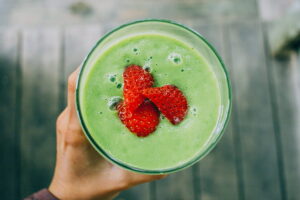
Avocados are an excellent ingredient for making green smoothies creamy and delicious.
Avocados are my favorite food. My desert-island food.
I’ve gone months eating a whole avocado every day, without gaining weight.
Why I include them:
- Avocados can help you enjoy sustained energy throughout the day.
- Avocados are also linked with healthier, more youthful skin, gut health from the fiber, brain health and preventing cognitive decline, eye health, and weight management.
How I eat them:
- In creamy green smoothies, like my Avocado Dream Smoothie.
- In salads and sandwiches.
- On avocado toast for breakfast or lunch.
- Even in healthy desserts, like Avocado Chocolate Pudding.
Foods to Eat Daily for Good Health #5 — Cruciferous Veggies
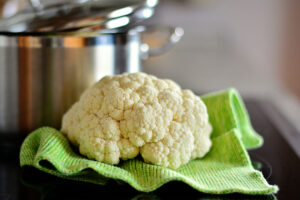
I don't enjoy broccoli that much, yet I do love cauliflower – especially steamed.
Crucifers, like broccoli, kale, cabbage, cauliflower, and radishes, are known for their high amounts of nutrients.
They get a bad rap from a viral internet rumor 20 years ago that they’re bad for your thyroid – they’re good for your thyroid!
Why I include them:
- Evidence that cruciferous vegetables are phenomenally powerful anti-cancer foods is voluminous.
- They reduce bad estrogens; this is desperately needed by Americans, as we're daily bombarded with endocrine disruptors.
- They are anti-inflammatory and contain compounds like sulforaphane, which can help the liver remove toxins.
How I eat them:
- Since I don’t actually enjoy broccoli much, I like to hide it in green smoothies, like my Broccoli Blitz Smoothie.
- In salads – steamed or fresh. I have many cabbage and kale salad recipes – throw in some kind of fruit, and some kind of nut or seed, and a great dressing made of citrus/vinegar/blended walnuts, and a handful of beans – that’s 4 of the 7 items on this list, right there!
- Steamed cauliflower is easy and delicious. I toss in some cherry tomatoes, whatever sliced veggies I have on hand, and pesto sauce. Voilà, lunch!
- In soups, like my comforting Creamy Spiced Cauliflower Soup.
- In main dishes and sides, like my Broccoli-Rice Bake with Coconut Curry Sauce.
Foods to Eat for Daily Good Health #6 — Legumes
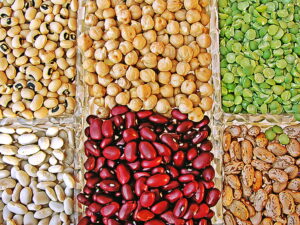
There’s almost no dish you can’t throw in some black beans or garbanzos to double the “staying power” and the fiber in the dish.
Legumes – the food group with a weird name – are plants whose seed grows inside a pod, like beans, carob, peas, peanuts, lentils, and even alfalfa and clover.
Why I include them:
- Legumes are cheap – and they are loaded with fiber and protein.
- They store well and have a long shelf life.
- They’re great for your heart. They have nutrients and fiber that can lower cholesterol and blood pressure and help you lose weight.
Tip: don’t buy into the bad rap legumes have gotten lately for their supposed “anti-nutrients,” phytates, and purines.
How I eat them:
- I like to add black beans and salsa to guacamole so I can eat lots of it on homemade organic corn chips.
- I like to add chickpeas (garbanzo beans) to salads. And, kidney beans are my favorite for adding to a salad, as they taste very starchy, which is a nice complement and balance to crunchy greens and vegetables.
- I love all varieties of lentils (green, red, and brown) in soups, like my Indian Green or Yellow Dahl. And other legumes are great in soups, too, like my Veggie Chili and Beans and Greens Soup.
- There’s almost no dish you can’t throw in a thawed baggie (or rinsed/drained can) of black beans or garbanzos, to double the “staying power” and the fiber in the dish, and they’ll take on the flavor of the sauce or dressing beautifully!
- Lima beans are great mashed in a burrito or with sweet potatoes.
Foods to Eat Daily for Good Health #7 — Whole Grains
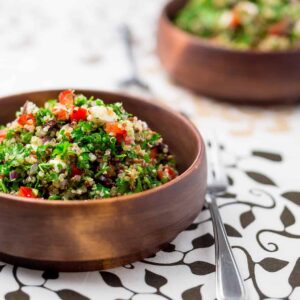
Quinoa is excellent for bowls and salads.
Swap refined grains for whole grains, like oats, quinoa, barley, and brown rice.
(Just because the whole-food starch and fiber and nutrition of grains are excellent – doesn’t mean you have to eat gluten. Many of them have none.)
Why I include them:
- Whole grains are packed with gut-healthy fiber.
- Studies show that consuming whole grains regularly can reduce the risk of chronic diseases, such as heart disease, stroke, type 2 diabetes, and some types of cancer.
- The complex carbohydrates and nutrients in whole grains provide sustained energy throughout the day.
- Whole grains support healthy immunity.
How I eat them:
- In my loaded salads, like my slightly-sweetened Sprouted Quinoa Salad and my Quinoa Carrot and Beet Salad.
- They’re great in soups, like my Famous Split Pea Soup made with brown rice.
- In homemade Sourdough Bread.
- As a base for healthy bowls, along with beans and other veggies.
Foods I Eat Almost Daily in Very Minor Amounts

I use raw honey, in moderation, in many ways.
Healthier Sweeteners
Honey is a natural superfood that’s loaded with nutrients and minerals.
- Research shows that raw honey is effective for treating burns, fighting colds, improving digestion, and much more.
- Add raw honey to your tea, drizzle some over cooked oats, mix it with almond butter for a sandwich, or even enjoy it by the spoonful – in moderation, of course.
Coconut Oil
Coconut oil is one of my household staples.
- I could list hundreds of reasons that coconut oil is a great replacement for “bad fats” in your diet and provides important nutrients.
- In summary, coconut oil helps balance hormones, is antibacterial, antiviral, and antifungal, and soothes digestion.
- Try using organic, unrefined coconut oil as a substitute for butter, margarine, shortening, or vegetable oil in any baking recipe. Usually, a 1:1 ratio is perfect for the oil or fat you are substituting for.
- Coconut oil is the perfect sautéing medium because, unlike other oils, it doesn’t create trans fats at high temperatures. I love it for sautéing vegetables.
Fermented Foods
Fermented foods, such as sauerkraut, kimchi, and miso, contain gut-healthy ingredients, like probiotics.
- Fermented foods, like natto and miso, contain nutrients that are vital for dental health.
- Probiotics can reduce inflammation, improve skin tone, and even reduce acne and eczema.
Final Thoughts
Now you know what my whole-food, plant-based diet looks like. It’s actually easy and inexpensive. Even if it’s different from what most people are doing now. Many of these foods store well – for a year or more.
By focusing each day on nutrient-dense whole foods (leafy greens, whole fruits, nuts/seeds, avocado, cruciferous veggies, legumes, whole grains), and including some “flexible but limited” items (healthier sweeteners, coconut oil), I create a daily eating pattern that supports energy, mood, digestion, body composition, and long-term health.
The key isn’t perfection — it’s consistency, variety, and moderation. Most days, I hit most of the “daily” food groups, and the “almost daily” items give flexibility and enjoyment without derailing.

Disclosure: This post may contain affiliate links that help support the GSG mission without costing you extra. I recommend only companies and products that I use myself.

Posted in: 12 Steps To Whole Food, Dental Health, Detox, Health Concerns, Immunity, Natural Remedies, Preventive Care, Recipes, Whole Food














